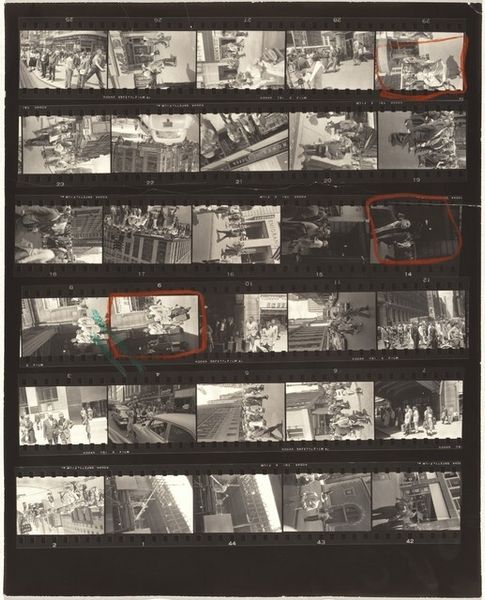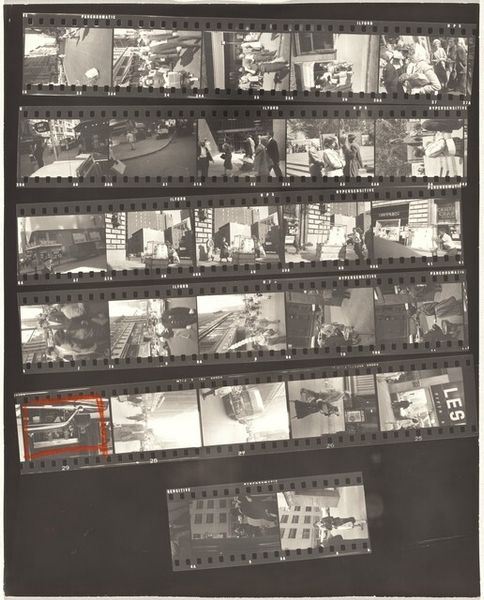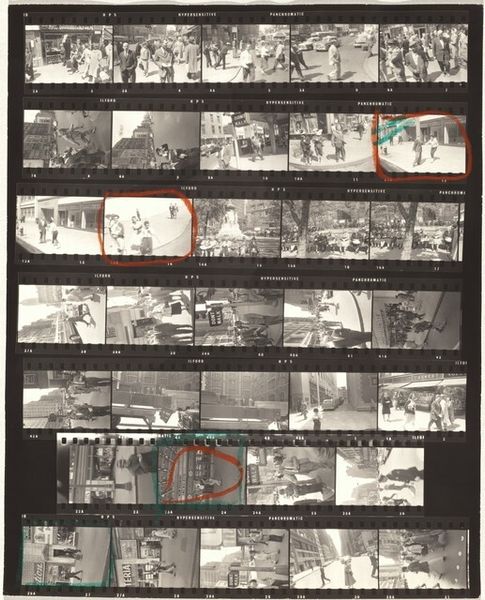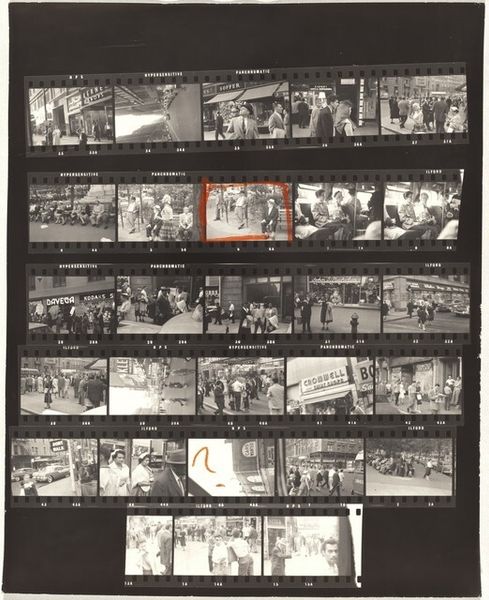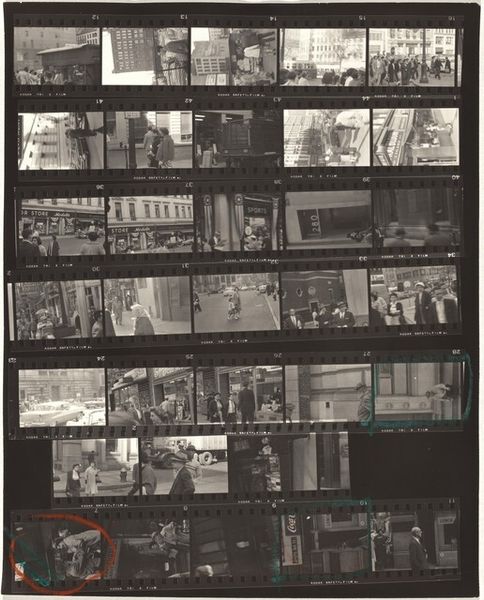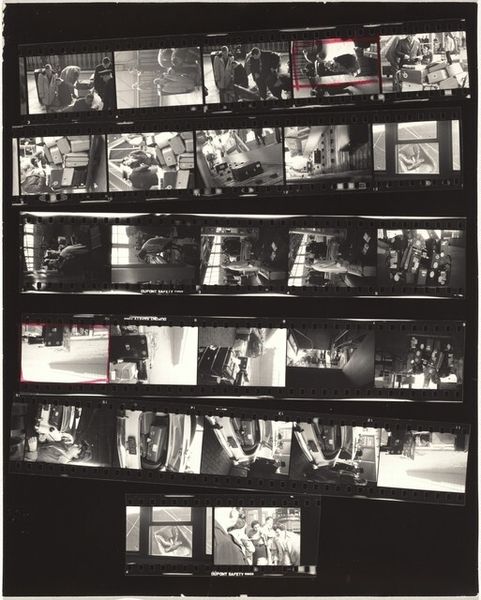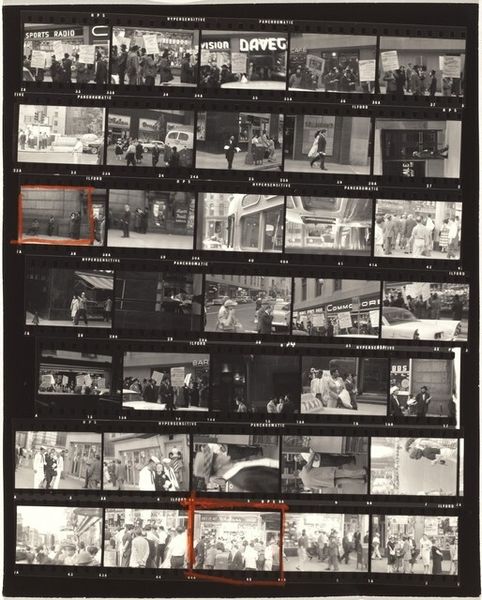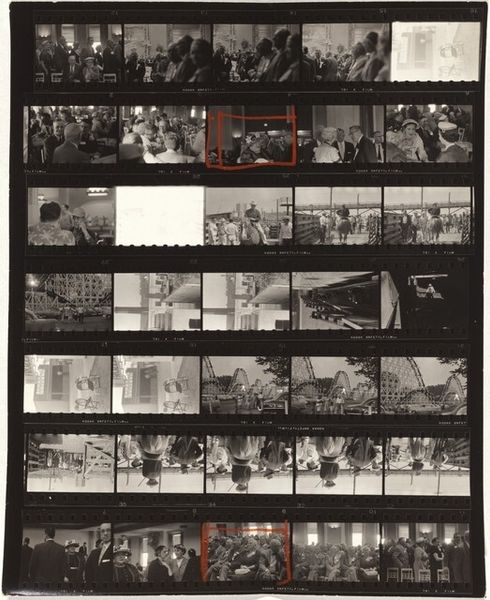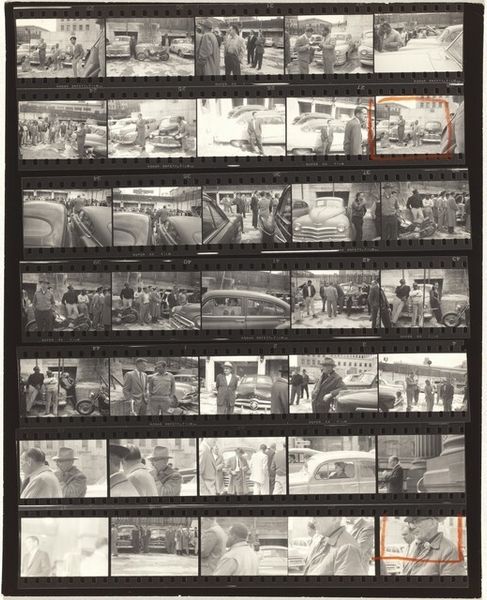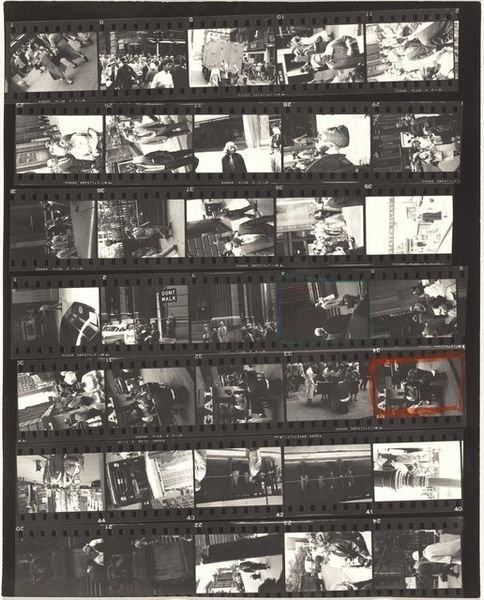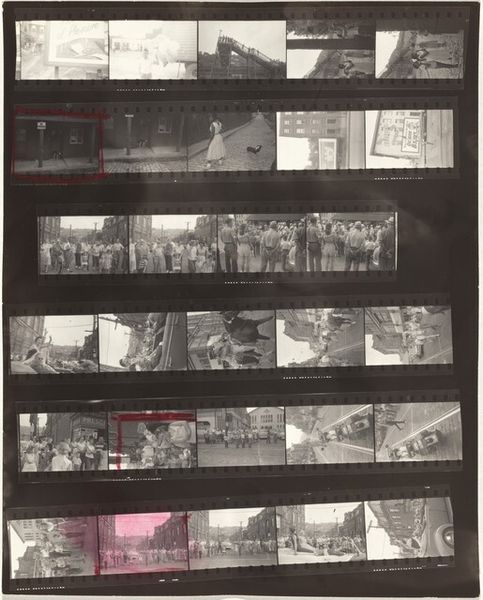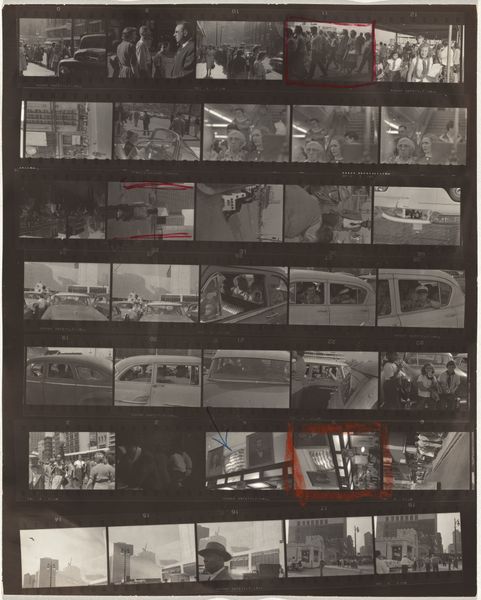
Dimensions: overall: 20.2 x 25.2 cm (7 15/16 x 9 15/16 in.)
Copyright: National Gallery of Art: CC0 1.0
Editor: Robert Frank’s “From the bus 72B,” made in 1958, shows a contact sheet filled with multiple black and white photographs. I find the presentation, almost like a storyboard, really intriguing. What stands out to you about this piece? Curator: It’s fascinating to see Frank's working process laid bare, isn't it? These contact sheets weren’t usually intended for public display. Seeing the edited frames marked in red shifts the photographer's decision-making process into the realm of the art itself. Frank’s work, particularly within the context of his book "The Americans", faced intense scrutiny and controversy upon its initial release. How do you think this particular presentation style changes our perception of those debates? Editor: It kind of humanizes him, makes him less like this untouchable figure. Showing the selects next to the rejects really reveals the conscious choices being made. Curator: Precisely! Frank was intentionally challenging the glossy, idealized images prevalent in mainstream media at the time. Consider the role of institutions and publications that promoted certain types of photography while marginalizing others. Seeing the range of images here invites us to question whose stories were considered worthy of being told, and how. Editor: So it’s not just the individual photographs but the entire sheet that carries meaning. Curator: Exactly. The very act of exhibiting the contact sheet becomes a statement. It democratizes the image-making process, implying that the meaning lies not just in the final product but also in the journey of observation, selection, and, ultimately, in its reception within a larger cultural narrative. What do you take away from that? Editor: That it forces us to be more active viewers. It makes you think about how images get their power and whose voices get amplified. Curator: Agreed. And that, I believe, is the enduring legacy of Frank's work and its continued relevance to contemporary debates about photography, representation, and the politics of seeing.
Comments
No comments
Be the first to comment and join the conversation on the ultimate creative platform.

